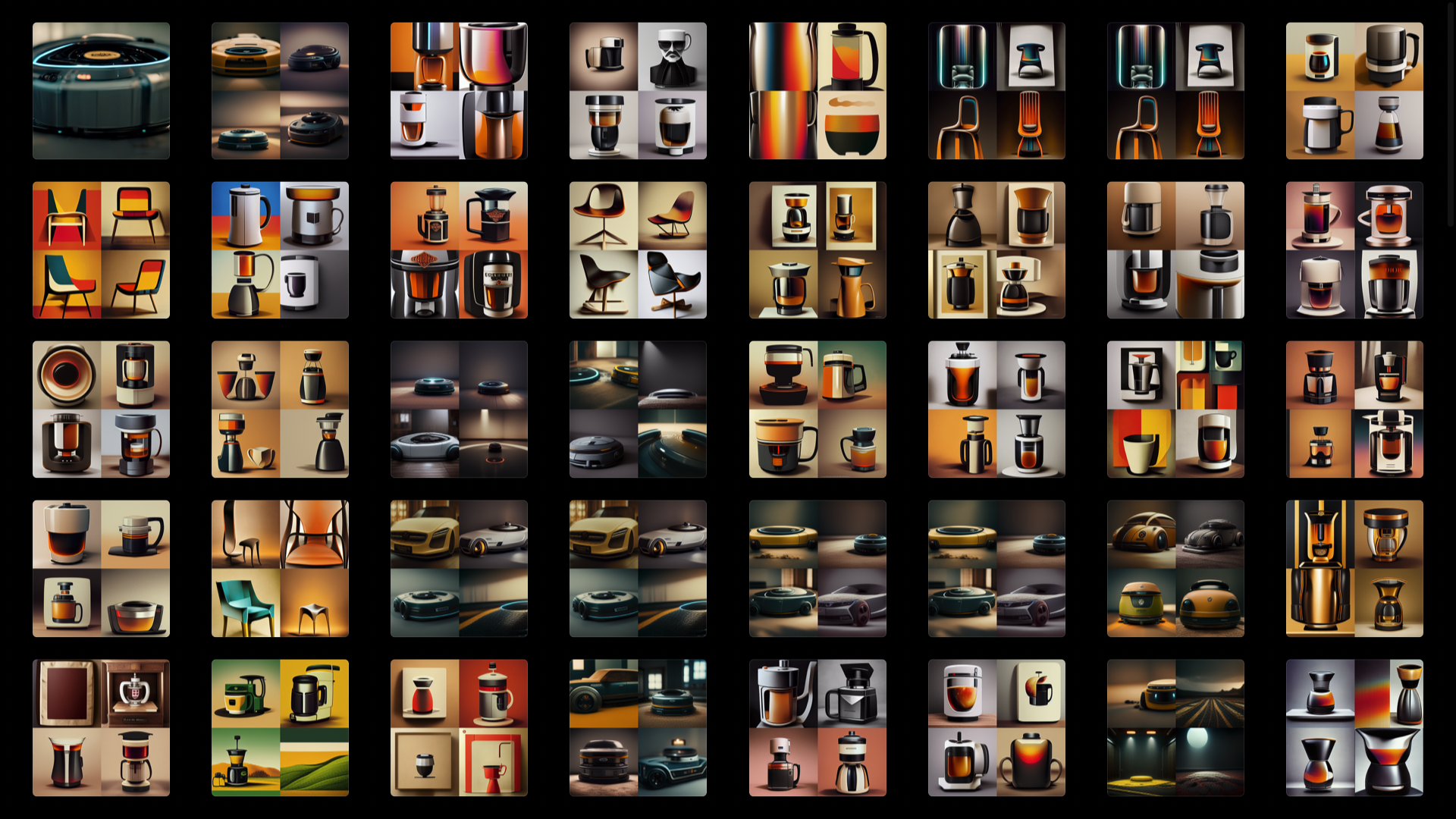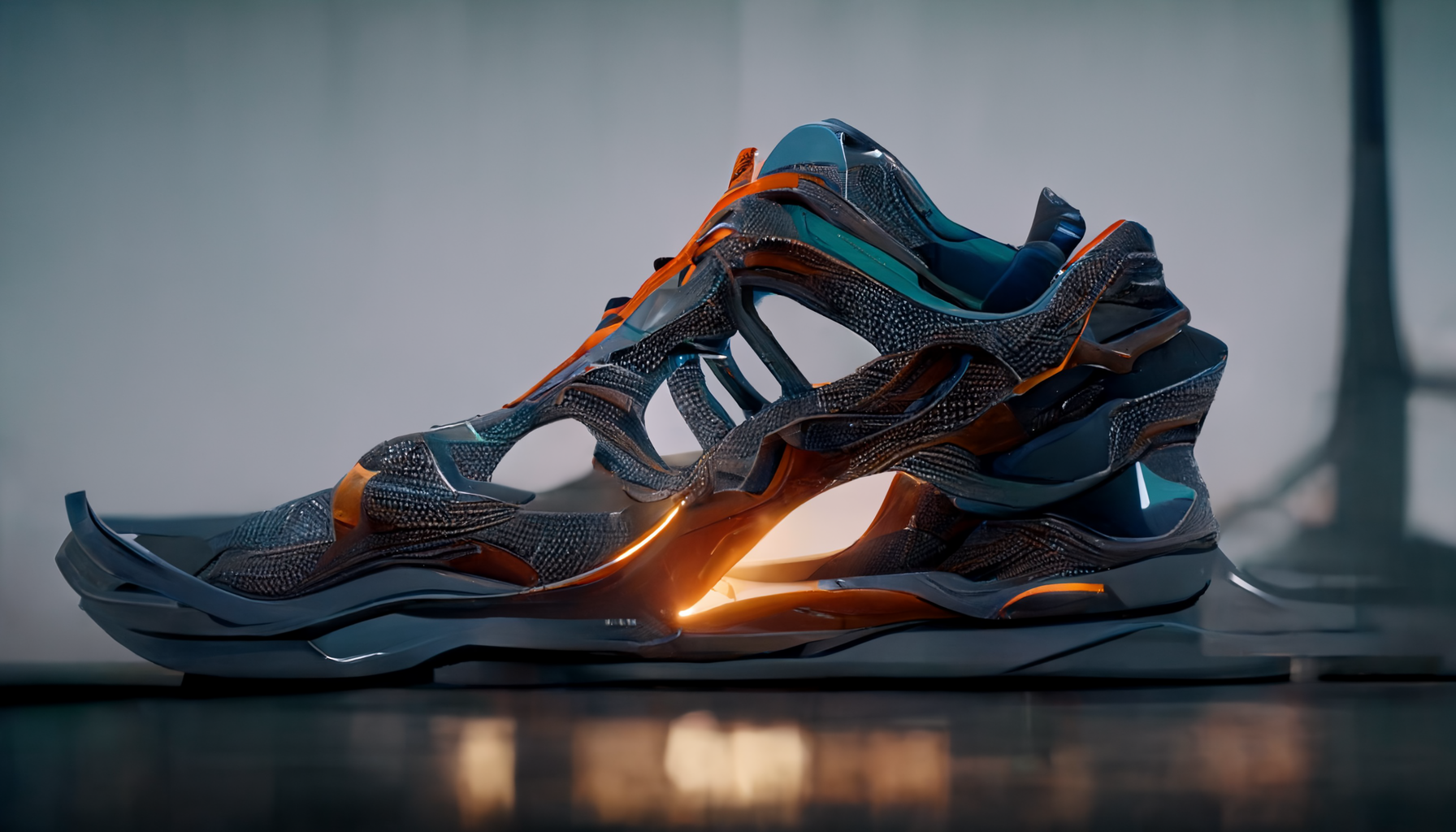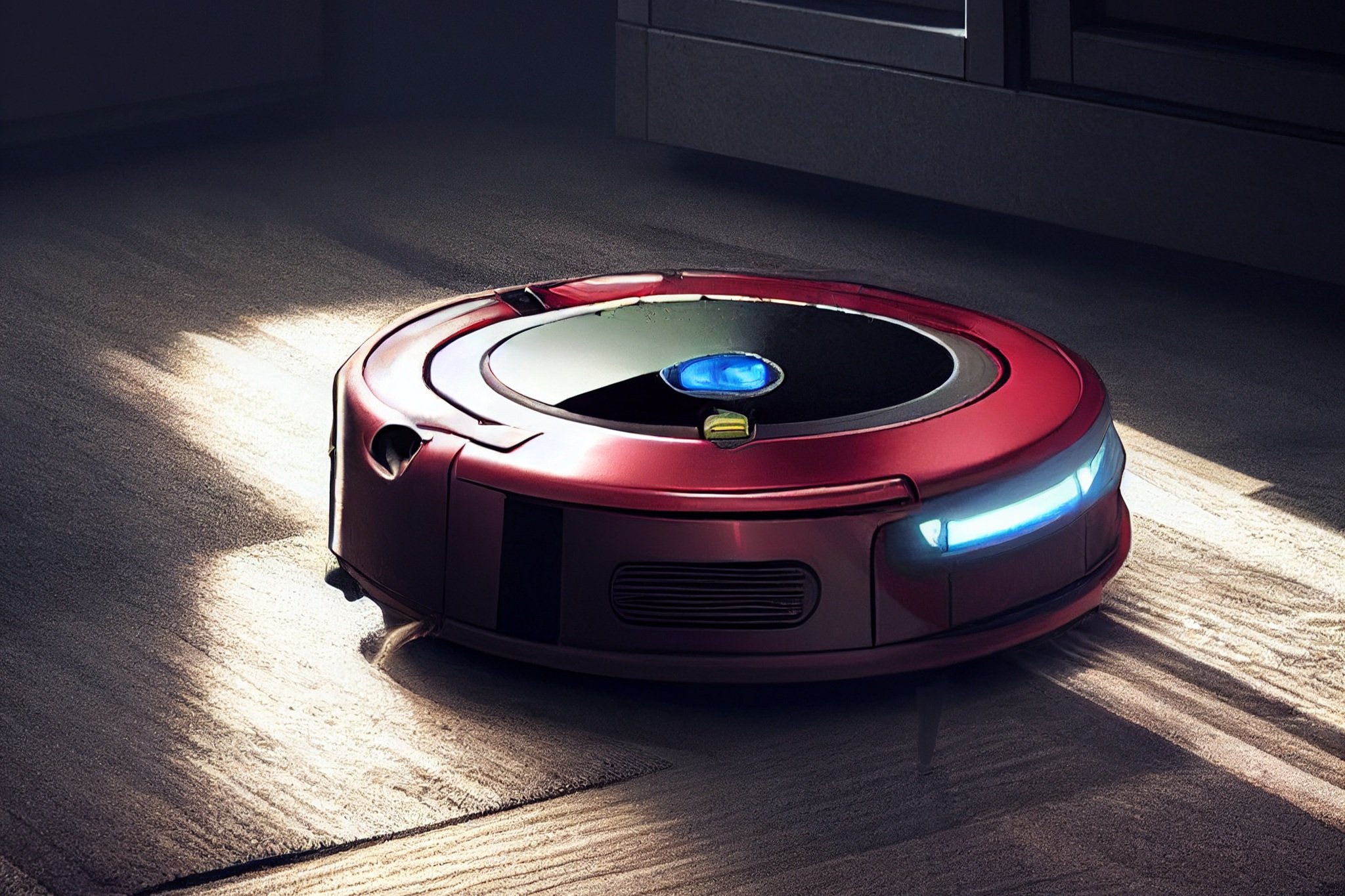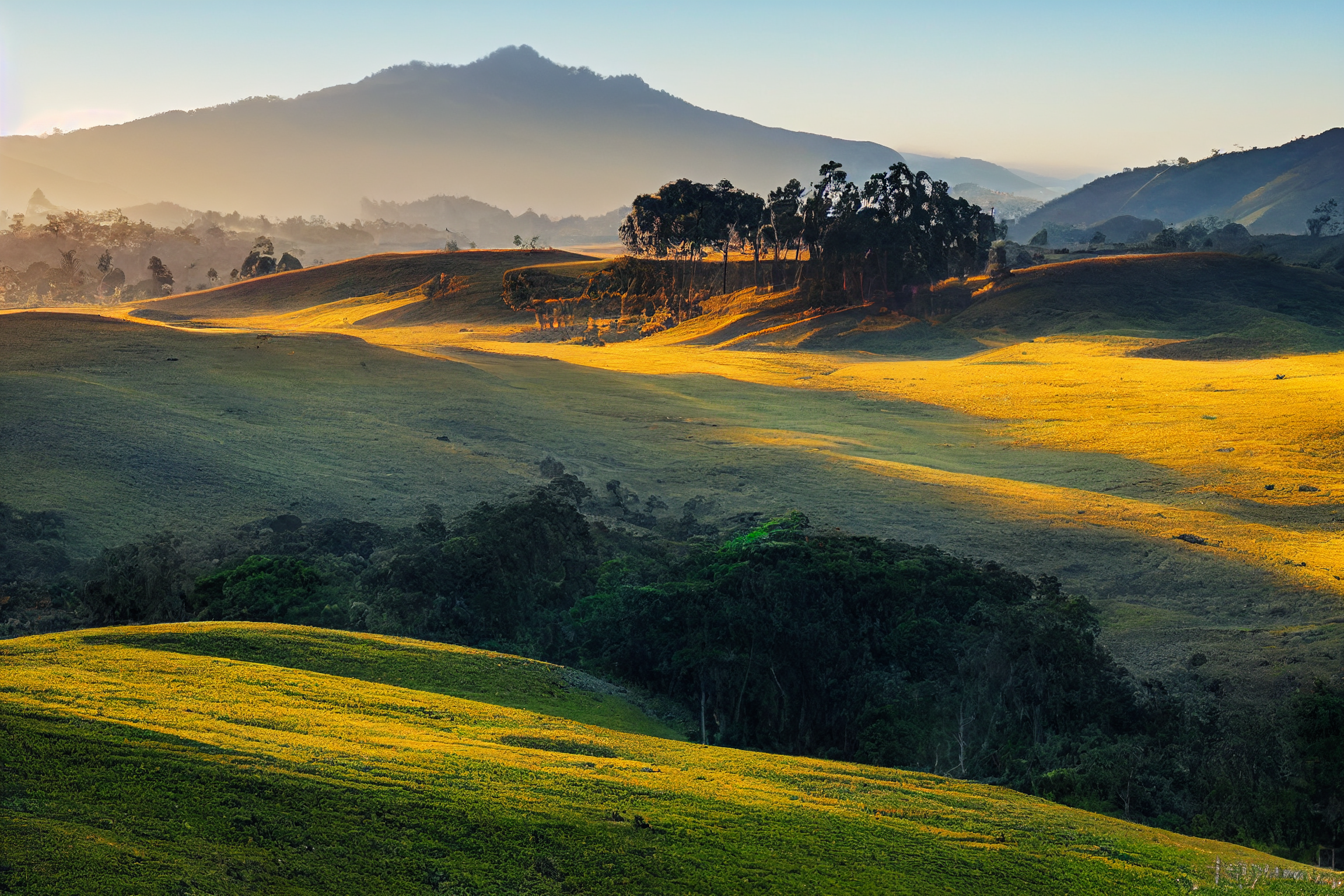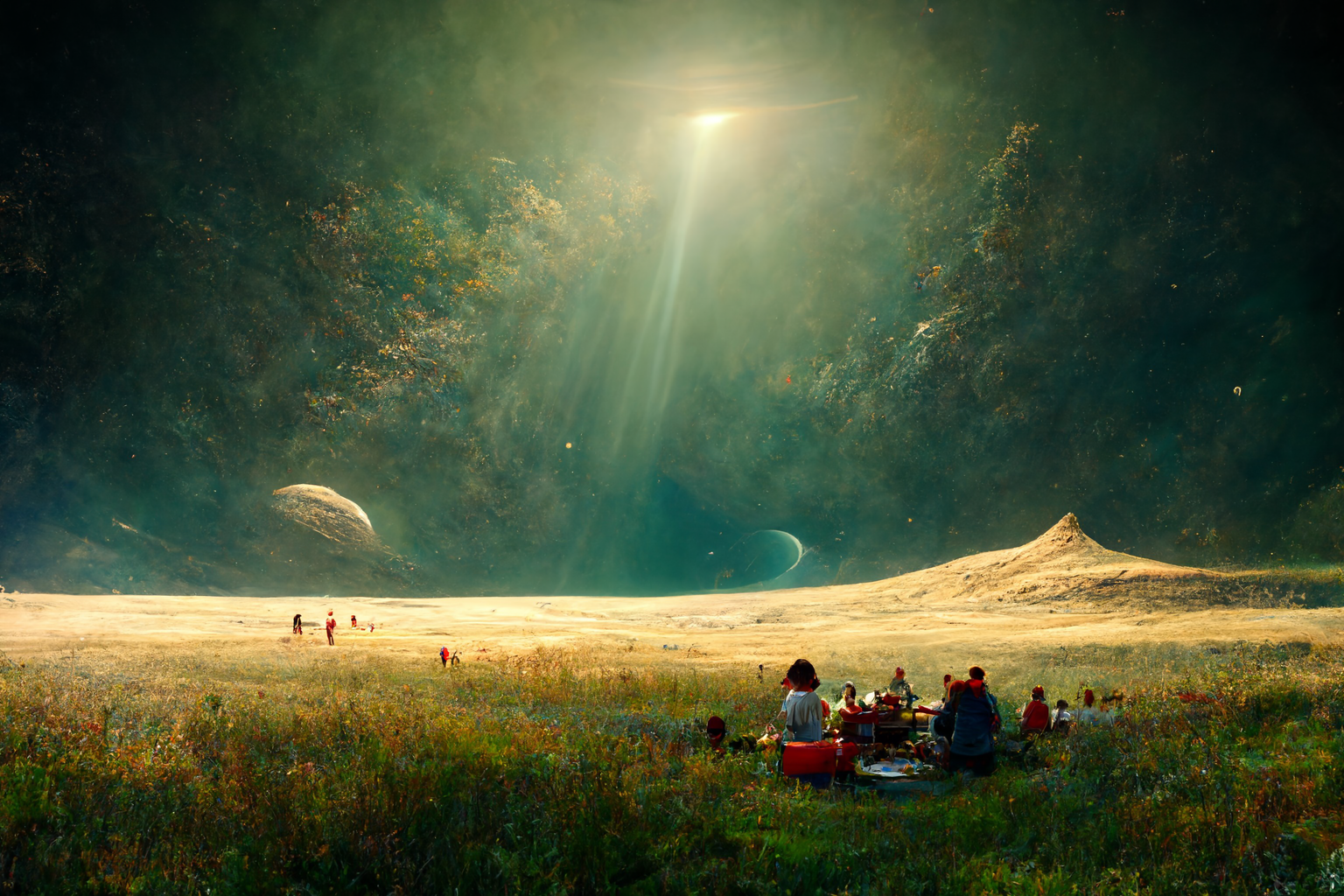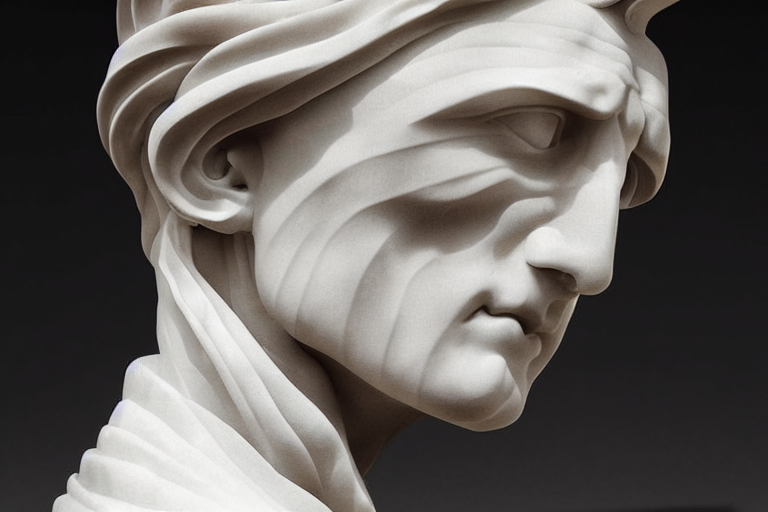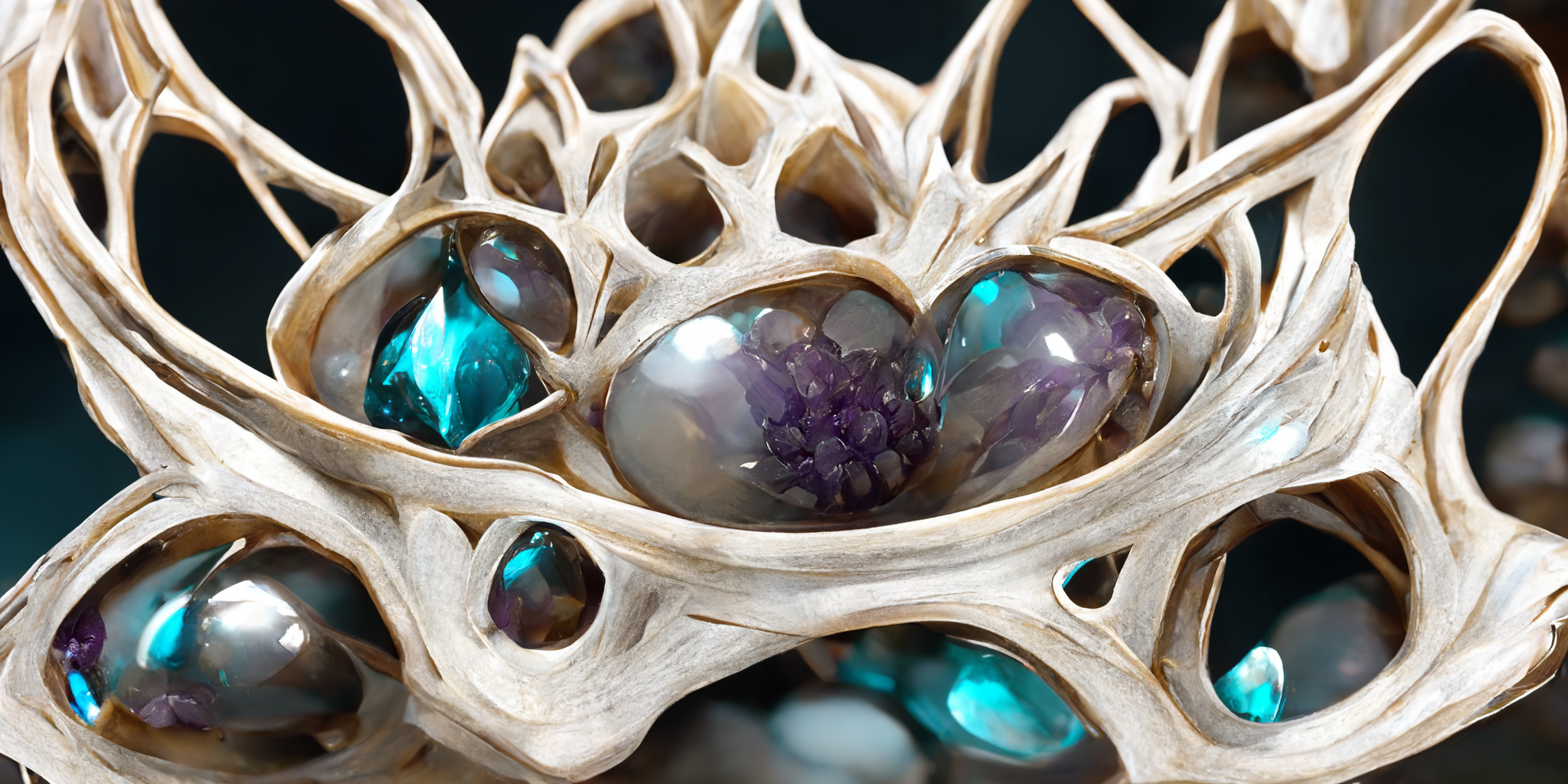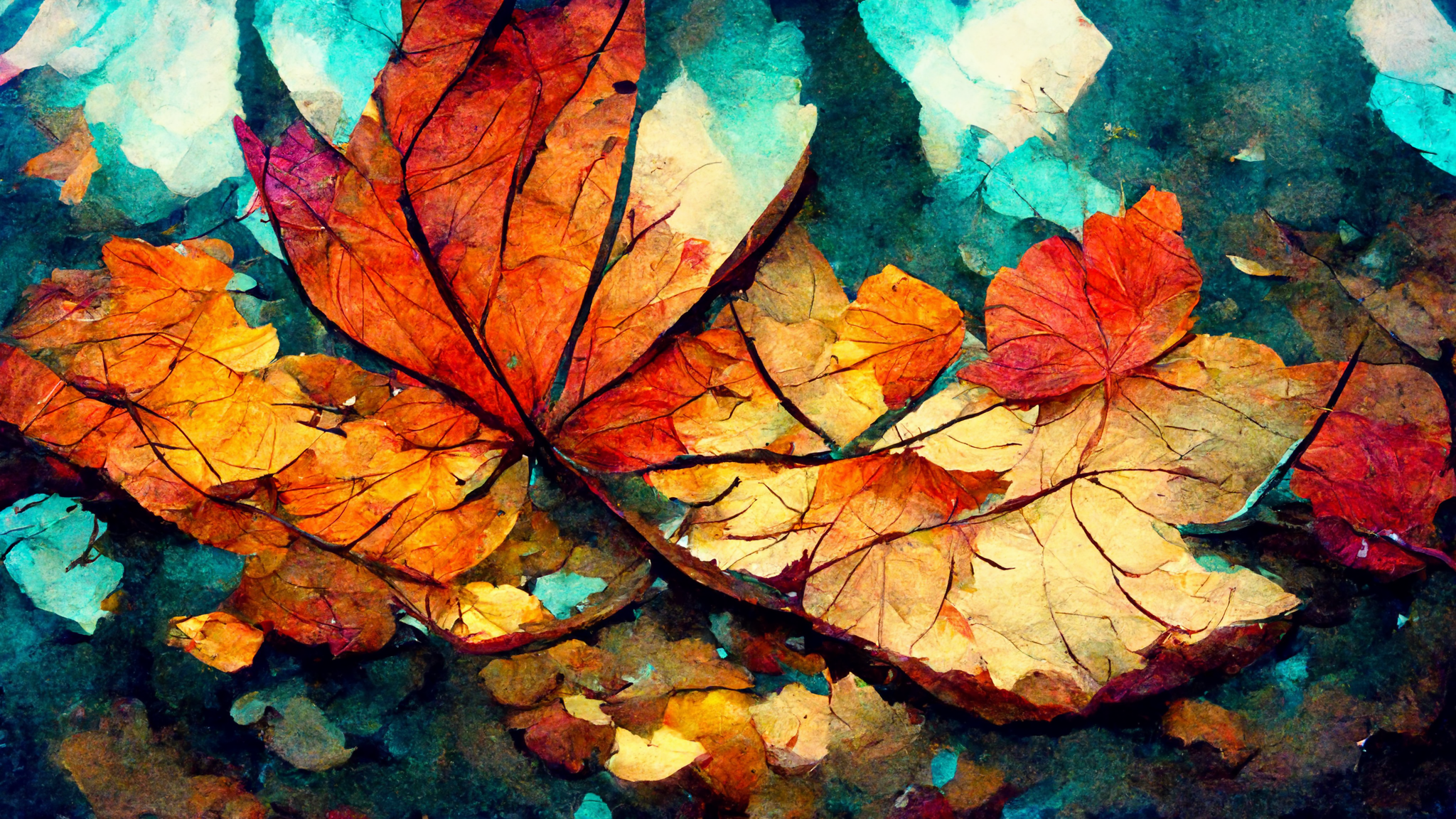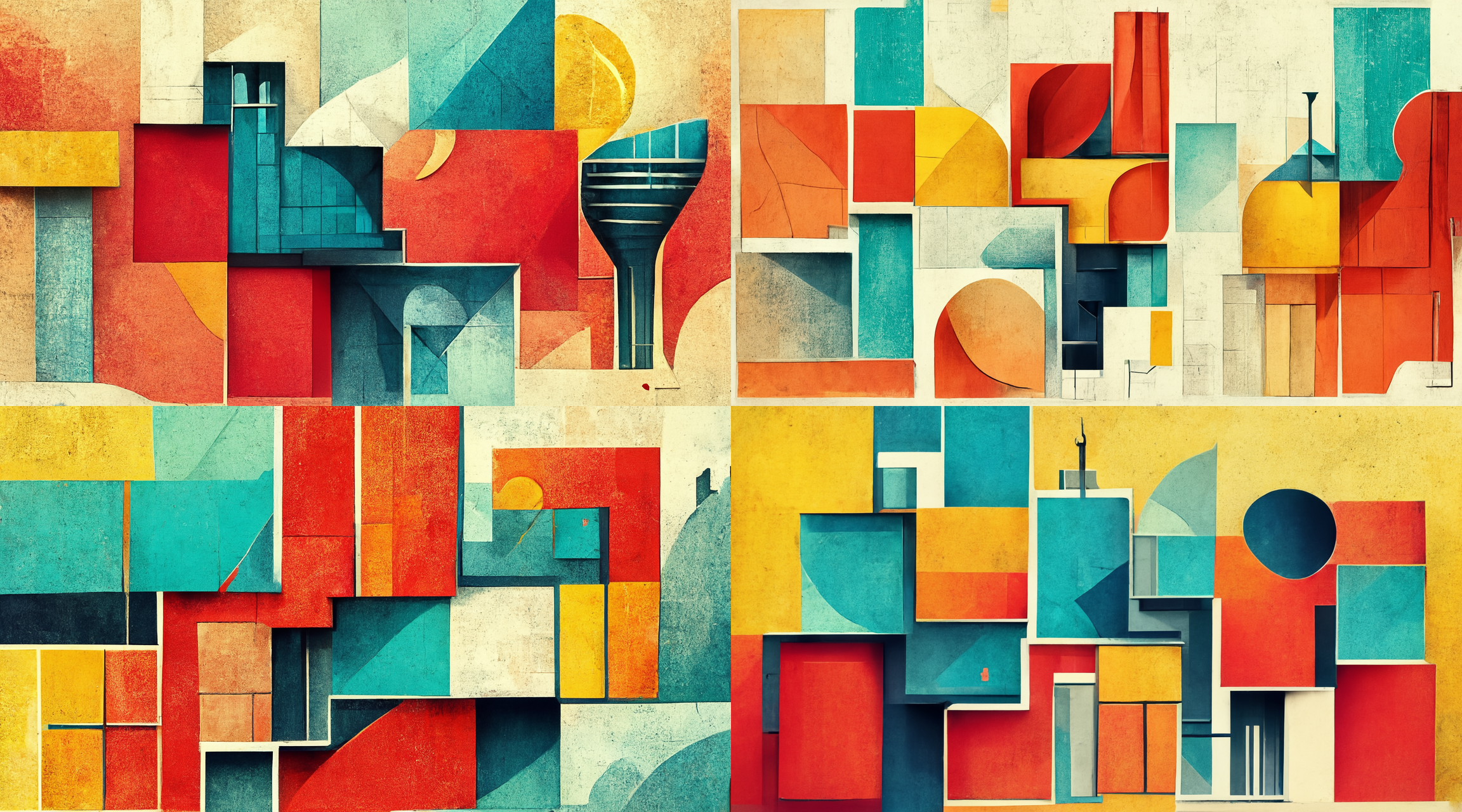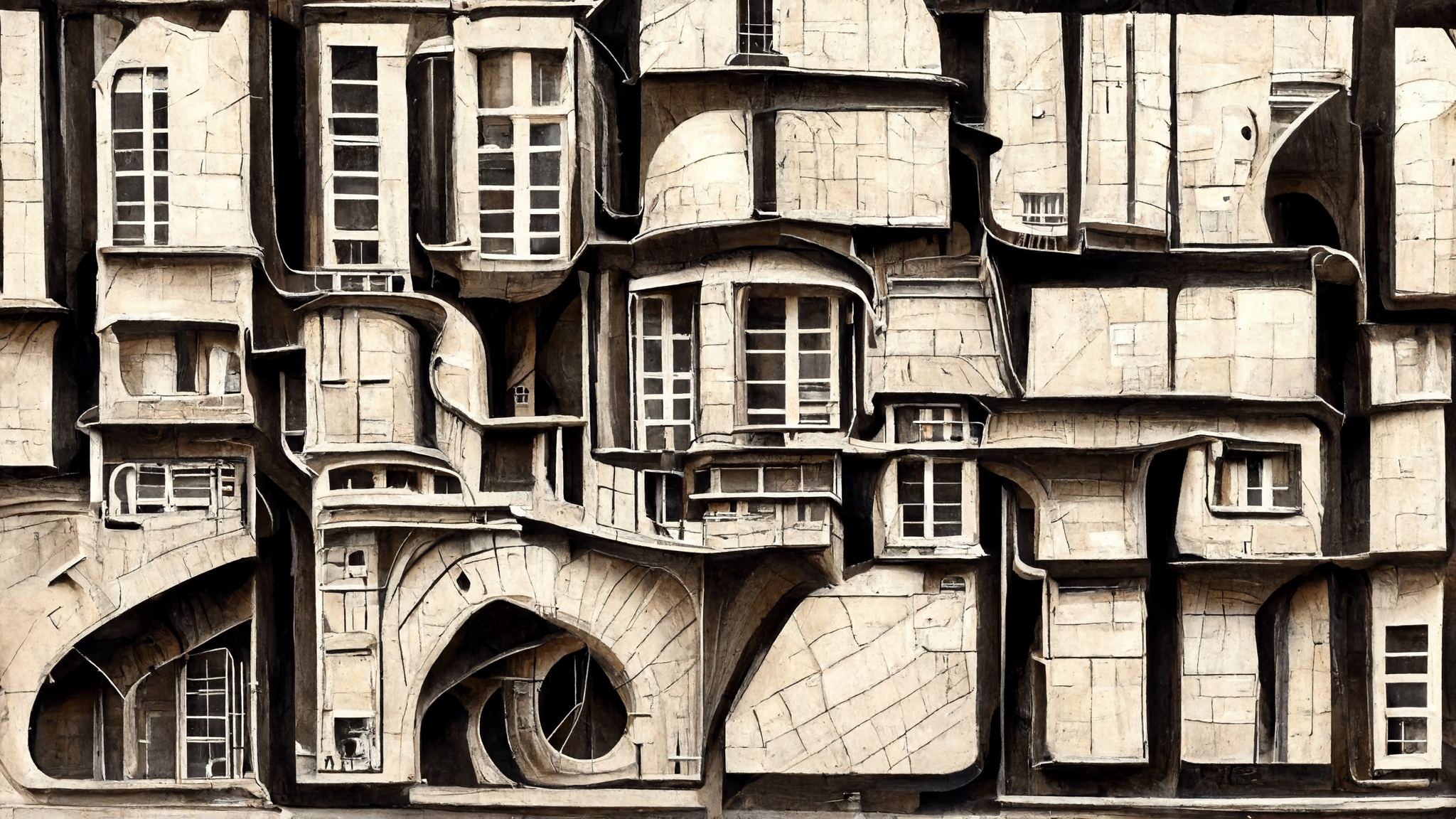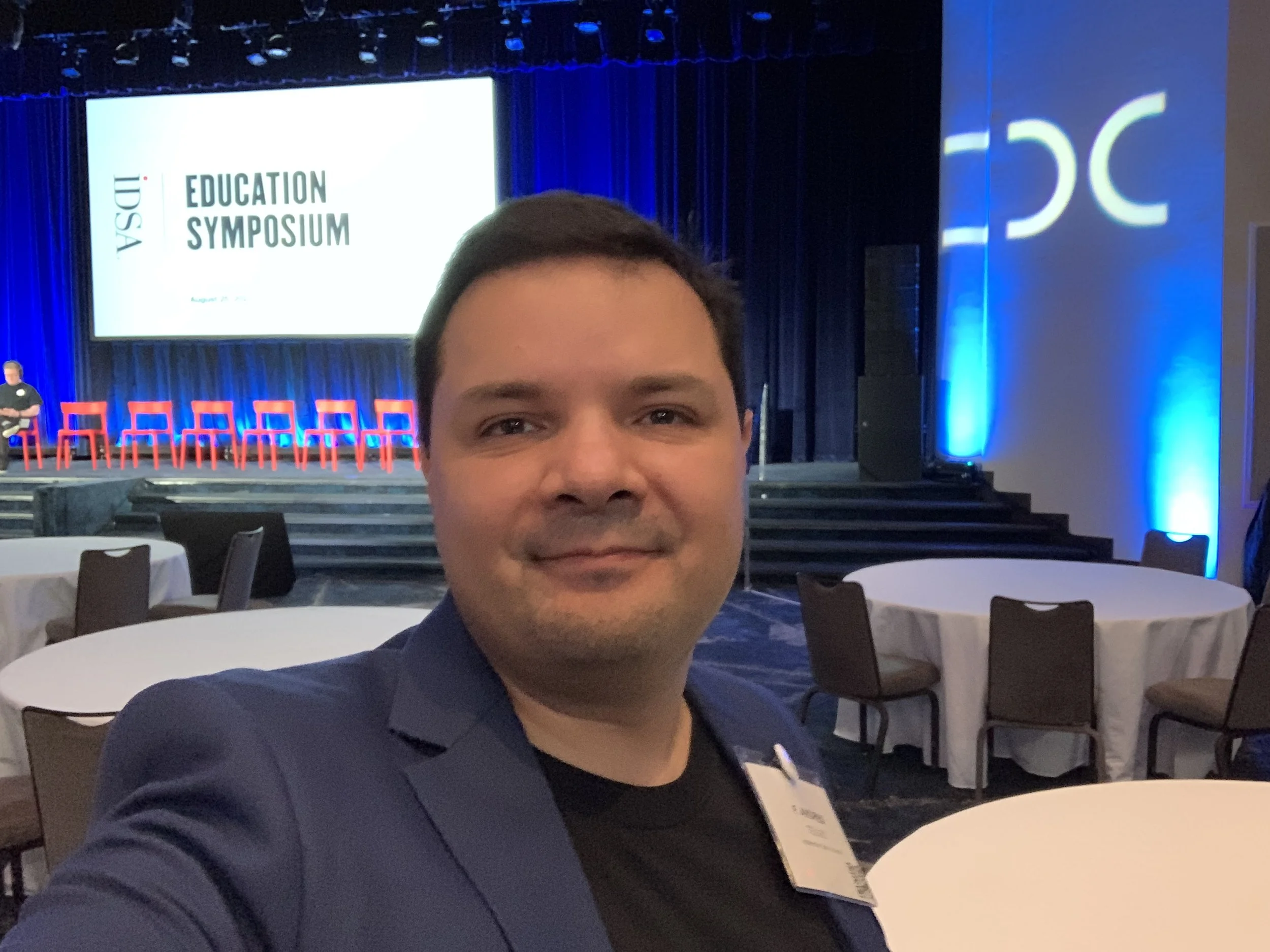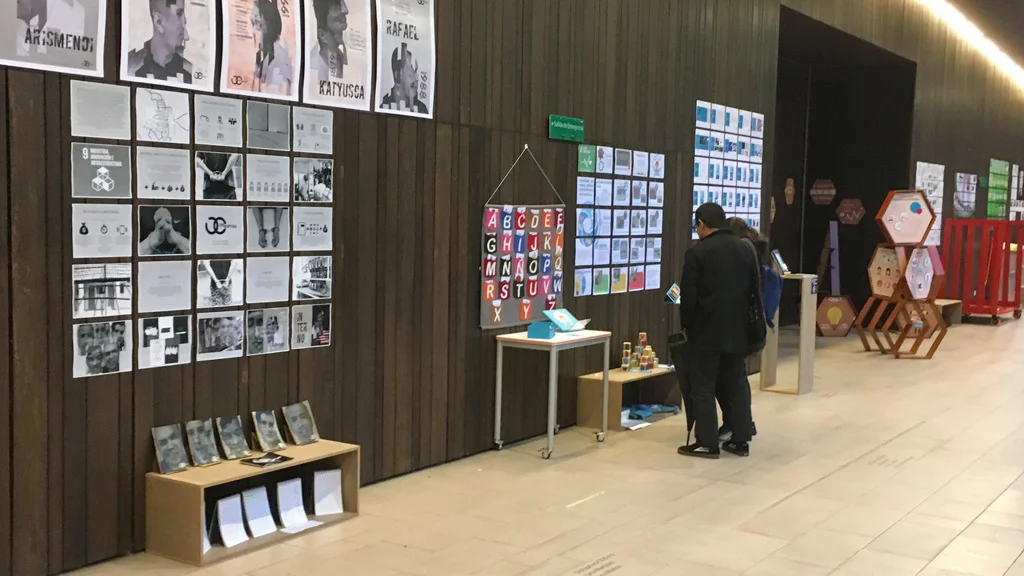For the past few weeks, I have been exploring Midjourney, an AI program that creates images from textual descriptions, in an effort to understand how this type of tool works and what are the implications of its use for design education and practice. Admittedly, these technologies are still in their infancy, and it’s impossible to predict how they will affect the design industry. However, from my experience with Midjourney, I think these tools will profoundly impact design and other creative fields in the coming years.
Midjourney and similar programs such as DALL-E or Stable Diffusion are tools that create images based on a textual prompt. The AI system, trained with billions of images and billions of descriptors, processes the textual input and generates several images that meet the description with more or less precision, depending on the parameters introduced by the user. Also, the system allows the user to refine and tweak these initial images to generate more refined results with higher quality and definition.
The resulting images vary in quality; some have a clear “digitally created” aesthetic, while others look like hyperrealistic photographs. However, it’s important to note that the quality of the images produced by these systems has improved dramatically in a very short time. Considering that all these programs are still in their beta stage, it’s not far-fetched to think that in the coming years (or even months!), some of the images generated digitally will be indistinguishable from photos taken in the “real World.”
From my experience using Midjourney, I think it’s a tool that can help designers in three ways:
By providing a means of quickly and easily creating dozens of new images based on a prompt, which significantly helps concept generation.
By reducing the time and effort it takes to communicate ideas in visual form.
By helping to educate designers on the use of artificial intelligence in design.
First, designers can use Midjourney to generate new ideas or images for a project quickly. For example, if a designer is working on a new product for a company, they could use Midjourney to create a range of potential design concepts based on the project brief, previous products in the same space, or the visual language used by the company. This would allow the designer to explore a broader range of options in a very short time.
Second, Midjourney can be used as a tool to “translate” abstract ideas into concrete images easily and effortlessly, which, in turn, may help designers communicate these ideas effectively to clients, co-workers, supervisors, and other project stakeholders. Reducing the time and effort, it takes to communicate ideas visually will probably have a positive impact on project completion times, reducing uncertainty and miscommunication throughout the design process.
And third, Midjourney can be used as a learning tool to help designers and design students understand how they can apply artificial intelligence in design education and practice for different purposes. By experimenting with the program and seeing the kinds of images it produces, designers can start to understand the potential of AI in their practice and how they can use it to create new and original ideas.
Overall, I think there is great potential in using Midjourney (and other similar tools) in both design education and design practice. However, the implications of such technologies in design and society are still uncertain and will depend on how designers and the public adopt and apply these tools.
You can learn more about Midjourney in the following URLs:
Midjourney Website: https://www.midjourney.com/
Midjourney User Manual: https://midjourney.gitbook.io/docs/user-manual#stylize-values
Quick Guide to MidJourney: https://lnkd.in/dmW4k9Zn
Imagine Parameters Illustrated: https://midjourney.gitbook.io/docs/imagine-parameters
Midjourney’s Tips for Text-Prompts: https://midjourney.gitbook.io/docs/resource-links/guide-to-prompting
Promptomania: https://promptomania.com/midjourney-prompt-builder/
DALL-E Prompt Book: http://dallery.gallery/wp-content/uploads/2022/07/The-DALL%C2%B7E-2-prompt-book-v1.02.pdf
Video: The AI that creates any picture you want: https://youtu.be/SVcsDDABEkM
Video: Will Artificial Intelligence End Human Creativity?: https://youtu.be/oqamdXxdfSA
Video: Disco Diffusion & Google Colab: https://youtu.be/wIw59kAU6u8
List of other free AI Art tools: https://pharmapsychotic.com/tools.html
Note: All the images in the gallery were created by me, with Midjourney, between August 20 and September 2, 2022.
